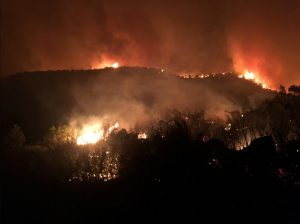
(Reuters) – A tornado killed a seven-day-old baby and injured more than two dozen people when it ripped through a trailer park in North Dakota and forecasters warned that parts of the Midwestern United States could face more twisters on Wednesday.
The tornado, with wind speeds around 127 miles per hour (204 kph), hit a trailer home park on Tuesday in the southwest part of Watford City, North Dakota, about 180 miles (290 km) northwest of Bismarck, destroying many mobile homes, the National Weather Service said.
A male baby was severely injured when the storm hit his family’s home and later died in hospital, the McKenzie County Sheriff’s Office said in a statement late on Tuesday. The office did not identify the baby.
NWS weather forecaster Marc Chenard warned that tornadoes could hit portions of central and northern Minnesota and portions of western Wisconsin on Wednesday.
“There’s a threat of a few tornadoes and potential of large hail and a threat of flash flooding for the same areas mainly from this evening into early Thursday,” Chenard said.
About 28 trailer park residents were also injured when the storm hit Watford City. They were taken to McKenzie County Hospital, with at least three being transported by aircraft and six listed in critical condition, the sheriff’s office said in a statement.
A representative from the McKenzie County Sheriff’s office did not immediately respond to requests for comment on Wednesday.
Severe wind threats will shift south by Thursday and threats of storms will then impact portions of southern Minnesota, northern Iowa and central Wisconsin. Chenard said that the storm has moved out of the North Dakota area.
North Dakota Governor Doug Burgum visited Watford City on Tuesday to survey areas hit by the tornado. He met with local officials and people who were displaced by the storm and were staying in local shelters, the governor’s office said in a statement.
The NWS rated the North Dakota tornado an EF-2, the second-strongest on the five-step Enhanced Fujita scale.
(Reporting by Gina Cherelus in New York; Editing by Scott Malone and Frances Kerry)










